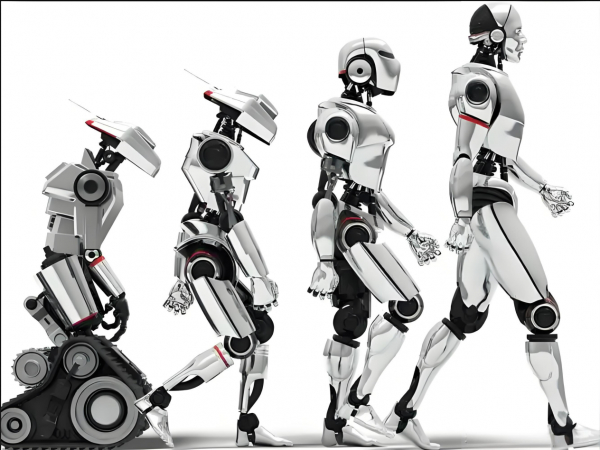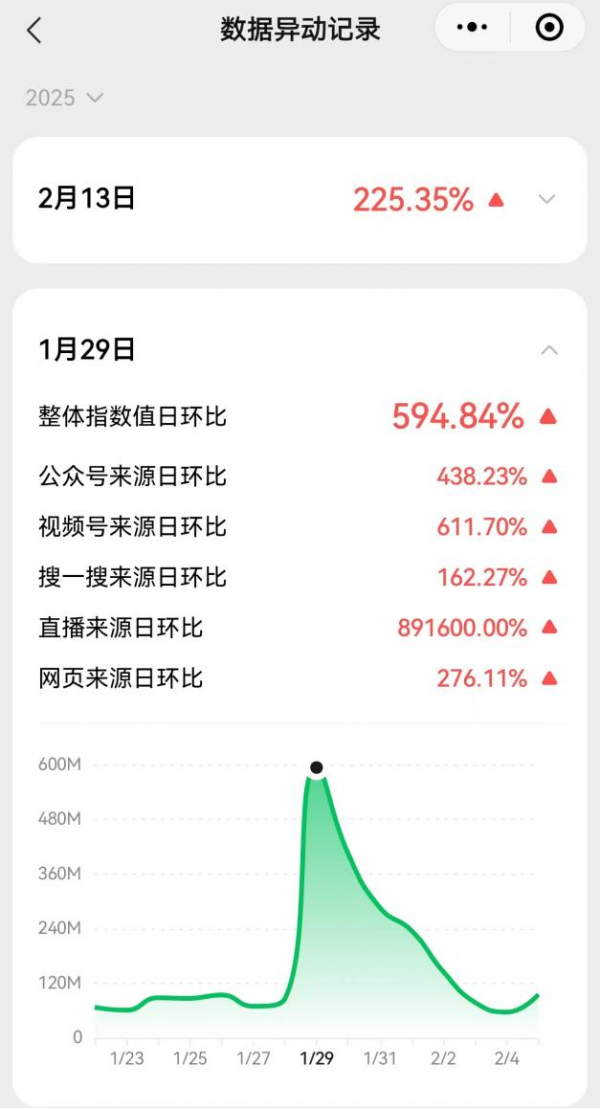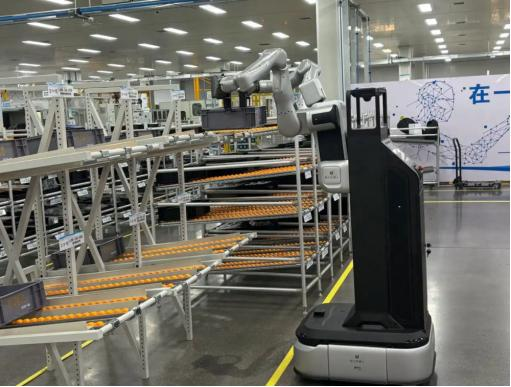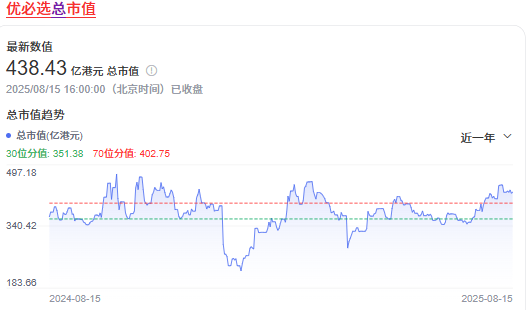Calm Capital and a Hot Market: The Dual Faces of Embodied Robots
![]() 08/18 2025
08/18 2025
![]() 570
570

Author/Qingfu
Editor/Jiajia
Recently, Pasini, an intelligent machine and sensor enterprise, successfully completed a new round of Series A funding led by JD.com. Notably, JD.com has invested in five other robot companies over the past three months, including Zhiyuan Robotics, Qianxun Intelligence, Zhuji Power, and Zhongqing Robotics.
While embodied robots have sparked a wave of financing, the number and scale of investments in the industry still fall short of expectations compared to the anticipated trillion-dollar market size. Zhu Xiaohu has publicly acknowledged exiting several embodied robot companies, citing a bubble that requires rationality.
Despite capital's caution, both consumer robots in the C-end market and industrial robots in the B-end market are exhibiting robust momentum. The embodied robot market currently embodies a dynamic yet cautious duality.
【1】Embodied Robots Become "Performers"
What can embodied robots actually do? For many, the most memorable example is the group performance of 16 Unitree "Fuxi" robots during this year's CCTV Spring Festival Gala, dancing the Northeast Yangko dance.
Robots dancing Yangko also became a hot topic during the Spring Festival. According to the WeChat Index, on January 29, the daily growth rate of the humanoid robot index surged to 594.84%, with the live streaming index increasing an astonishing 8916 times.
 (Source: WeChat)
(Source: WeChat)
On JD.com's Unitree Technology platform, both the Unitree G1 priced at 99,000 yuan per unit and the Unitree H1 priced at 650,000 yuan per unit sold out quickly.
The technological allure sparked public curiosity and a desire to explore humanoid robots, giving rise to new demands and industries.
One avenue is renting robots for commercial performances, charging by the day. To boost popularity, shopping malls, stores, and even exhibitions utilize embodied robots as a selling point in their marketing activities to attract customers.
Taking Shanghai IFC Mall as an example, to increase visitor numbers, the mall rented two humanoid robots from Landmark Mark to perform customized dances, greetings, emotional conversations, and various interactive actions for the audience.
Relying solely on these performance actions, it attracted a large number of customers, with daily service clientele reaching 1,000 visits, increasing the store conversion rate by 22%.
From the data, it is evident that commercial performances by embodied robots can genuinely enhance merchant traffic and actual sales conversion rates, albeit at a significant cost.
It is understood that in the first half of this year, the rental price of a humanoid robot could reach up to 20,000 yuan per day. Based on this rental fee, a Unitree Technology G1 can recoup its costs after just five days of rental, while the higher-priced H1 requires only one month to recoup its costs, with the rest being profit.
Another avenue is organizing robot science popularization tours and earning money through ticket sales. Many companies stockpile a large number of robots and conduct science popularization tours across the country, akin to how stars hold concerts.
Taking Huanmeng Technology as an example, the company currently owns 1,000 robots, including humanoid robots, robot dogs, robotic arms, etc., showcasing dances, martial arts, calligraphy, chess, and more for the audience. Its team of over 100 people is usually divided into three teams to conduct robot tours in cities like Beijing, Shanghai, and Guangzhou.
A staff member from the company told Huxiu in an interview that even with a 50% attendance rate, the company's net profit for one tour ranges from hundreds of thousands to millions of yuan.
Embodied robots have become a nationwide trend, demonstrating economic value in industries such as exhibition rentals. However, their value is not limited to the C-end market; the larger market space lies in the B-end market.
【2】Embodied Robots Show a "Trend of Entering Factories"
"If the ratio of humanoid robots to humans is around 2:1, then the demand for robots could be 10 billion or even 20 billion, far exceeding the number of electric vehicles." As early as the 2023 Tesla Annual Shareholder Meeting, Musk believed that the market size for embodied robots would exceed ten billion dollars and would be widely applied in the industrial sector.
Taking the automotive manufacturing industry as an example, in addition to traditional welding and painting processes, the largest application scenario for embodied robots is in material handling and transfer. Traditional material handling and transfer are usually done manually, with materials weighing from over ten kilograms to hundreds of kilograms. Manual handling is not only inefficient and prone to errors but also causes physical injury to employees.
Embodied robots offer a different approach. Through smart cameras and QR codes, they can identify hundreds of different components and place them on different production lines 24 hours a day without rest.
Previously, due to technical issues such as recognition efficiency, the cooperation between embodied robots and manufacturing factories remained in the testing phase. However, with technological breakthroughs, embodied robots have begun large-scale applications in material handling and transfer on production lines.
 (Source: Jining News)
(Source: Jining News)
For example, in April 2024, the success rate of A2-W embodied robots from Zhiyuan in handling and transferring components in the laboratory was only 60%, but this year, the success rate in the laboratory has reached 99.9%.
It is precisely because of these technological breakthroughs that Fulin Precision Machinery has purchased nearly 100 Expedition A2-W embodied robots from Zhiyuan Robotics. In tasks involving two shifts and the handling of over 800 transit boxes per shift, the nearly 100 Expedition A2-W robots have achieved zero errors.
"Previously, these tasks required a lot of manual operations, which were not only inefficient but also prone to errors. Since the introduction of robotic arms, production efficiency has increased by 30%, and the product qualification rate has also increased from the original 85% to 95%," said a responsible person from Fulin Precision Machinery to Shanghai Securities News, indicating that embodied intelligence is already fully capable of industrial implementation.
In fact, it's not just Zhiyuan. Domestic embodied robot companies such as UBTECH and Unitree Technology have also begun to show a "trend of entering factories".
On July 20th of this year, UBTECH won a robot equipment procurement project worth 90.5115 million yuan from Miyi Automobile, with its industrial humanoid robot Walker S1 entering the BYD Automobile factory for practical training;
Lingbao CASBOT stated that leading customers in industries such as industrial manufacturing, new energy, and automobiles have conducted batch testing or even small-scale deployment of their embodied robot products, and commercial-scale deployment is not far off;
Sunyan Power, which won the championship in the humanoid robot half-marathon competition, has received over 2,000 commercial orders in the first half of this year, with a total contract value expected to exceed 100 million yuan:
In the B-end market, which is invisible to the public, embodied robots have moved from the first stage of laboratory research to the second stage of small-scale factory testing and are now entering the third stage of large-scale mass production.
【3】Relatively Calm Capital Market
"Embodied artificial intelligence refers to intelligent systems that can understand, reason, and interact with the physical world," said Huang Renxun when discussing the next wave after AI, giving the answer of embodied robots and believing that humanoid robots will become as prevalent as cars in the future.
Whether from the heat of the consumer market or the beginning of large-scale applications in the industrial manufacturing field, the future of embodied robots is full of imagination, attracting substantial capital.
According to ITjuzi statistics, in the first three months of 2025, there were 54 investment and financing transactions in China's embodied intelligent robot industry, with a scale of 6.046 billion yuan. The number of financed enterprises has already surpassed the total for the entire year of 2023.
In July alone this year, embodied robot manufacturers secured multiple large-scale financing deals:
"Xingdong Jiyuan" announced nearly 500 million yuan in Series A funding from investors such as CDH VGC and Haier Capital, "Yun Shenchu" announced the completion of nearly 500 million yuan in financing led by Fortune Capital and Guoxin Fund, and "Tashi Zhihang" completed a $122 million angel+ round of financing led by Meituan Strategic Investment. "Xinghaitu" has successively completed both A4 and A5 rounds of financing...
However, some capital remains cautious about the embodied robot industry.
"I asked these CEOs, where are your potential commercial customers? I feel like the customers they mentioned are just imaginary. Who would spend over ten thousand yuan to buy a robot to do these tasks?" Zhu Xiaohu said that the heat around embodied intelligence is too high and that it needs to go through a bubble period and requires rational thinking.
The calmness of capital can also be felt in reality. At the 2025 World Robot Conference, Xu Xiaolan, President of the China Electronics Society, even stated that by 2035, the market space for humanoid robots in China's industrial manufacturing sector could reach 1.6 trillion yuan, and the market space for humanoid robots in China's life service sector could reach 1.9 trillion yuan.
For a trillion-dollar sunrise industry ten years from now, the total financing amount for embodied intelligence in 2024 was less than 10 billion yuan. Compared to public expectations for embodied intelligence ten years later, such investment efforts are relatively small.
Similarly, in the secondary market, one can also sense the calmness and caution of capital towards embodied robots.
Estun Automation, a stock related to the embodied robot concept and primarily focusing on servo systems, had a market value of 22.4 billion yuan on August 15, 2022. However, on August 15 three years later, its market value was 21 billion yuan, a decrease of 1.4 billion yuan compared to three years ago;
UBTECH, which focuses on industrial embodied robots, had a market value of 43.8 billion Hong Kong dollars on August 15, 2025. In October 2024, its market value once approached 48 billion Hong Kong dollars, a decrease of nearly 4.2 billion Hong Kong dollars from the previous year's high.
 (Source: Baidu Stock Market)
(Source: Baidu Stock Market)
Even Zhiyuan Robotics had to spend 2.1 billion yuan to acquire a 63.62% stake in the A-share listed company SWANCOR, which was questioned by the outside world as a backdoor listing. In response to outside questions, Zhiyuan Robotics stated that it was merely acquiring controlling shares and did not constitute a backdoor listing as defined by the "Measures for the Administration of Major Asset Reorganizations".
On one hand, there is the lively performance and rental-driven traffic frenzy in the consumer market, as well as the quietly emerging "trend of entering factories" following technological breakthroughs in the industrial sector. On the other hand, there is the calm observation of the capital market at this moment. Embodied robots are presenting their unique dual faces.
Whether embodied robots can transcend the current "performance period" and "testing period" and ultimately break through the key lies in their ability to continuously prove their core competence in solving practical problems and a clear commercialization path. When embodied intelligence truly matures and is capable of solving real-life problems in production and life, this will be the ultimate proposition that embodied intelligence must answer to move from a trend to a mature industry.








